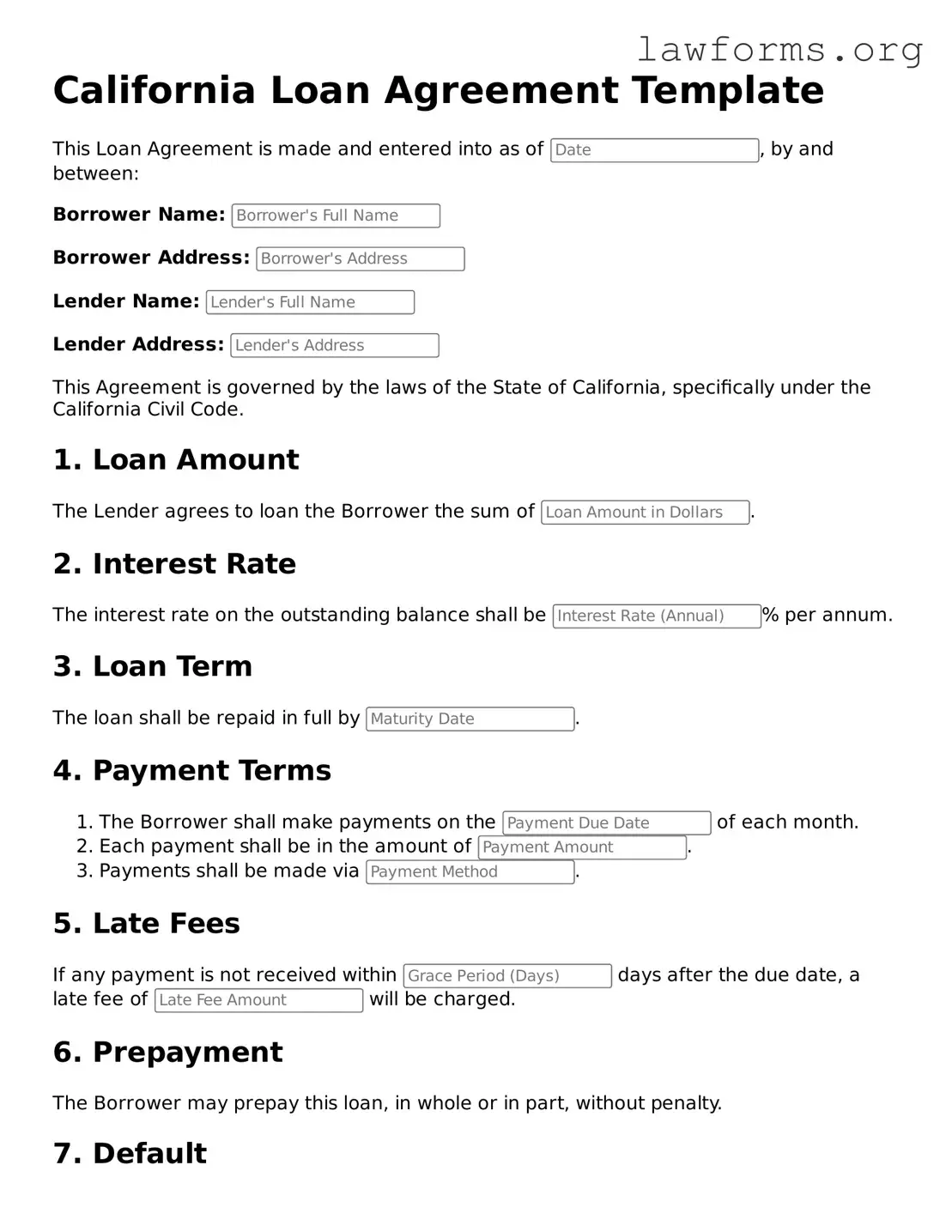Attorney-Approved Loan Agreement Template for the State of California
The California Loan Agreement form is a legal document that outlines the terms and conditions of a loan between a lender and a borrower. This form serves to protect the interests of both parties by clearly defining repayment schedules, interest rates, and other essential details. Understanding this agreement is crucial for anyone involved in a loan transaction in California.
To get started on your loan agreement, fill out the form by clicking the button below.
Customize Document Online
